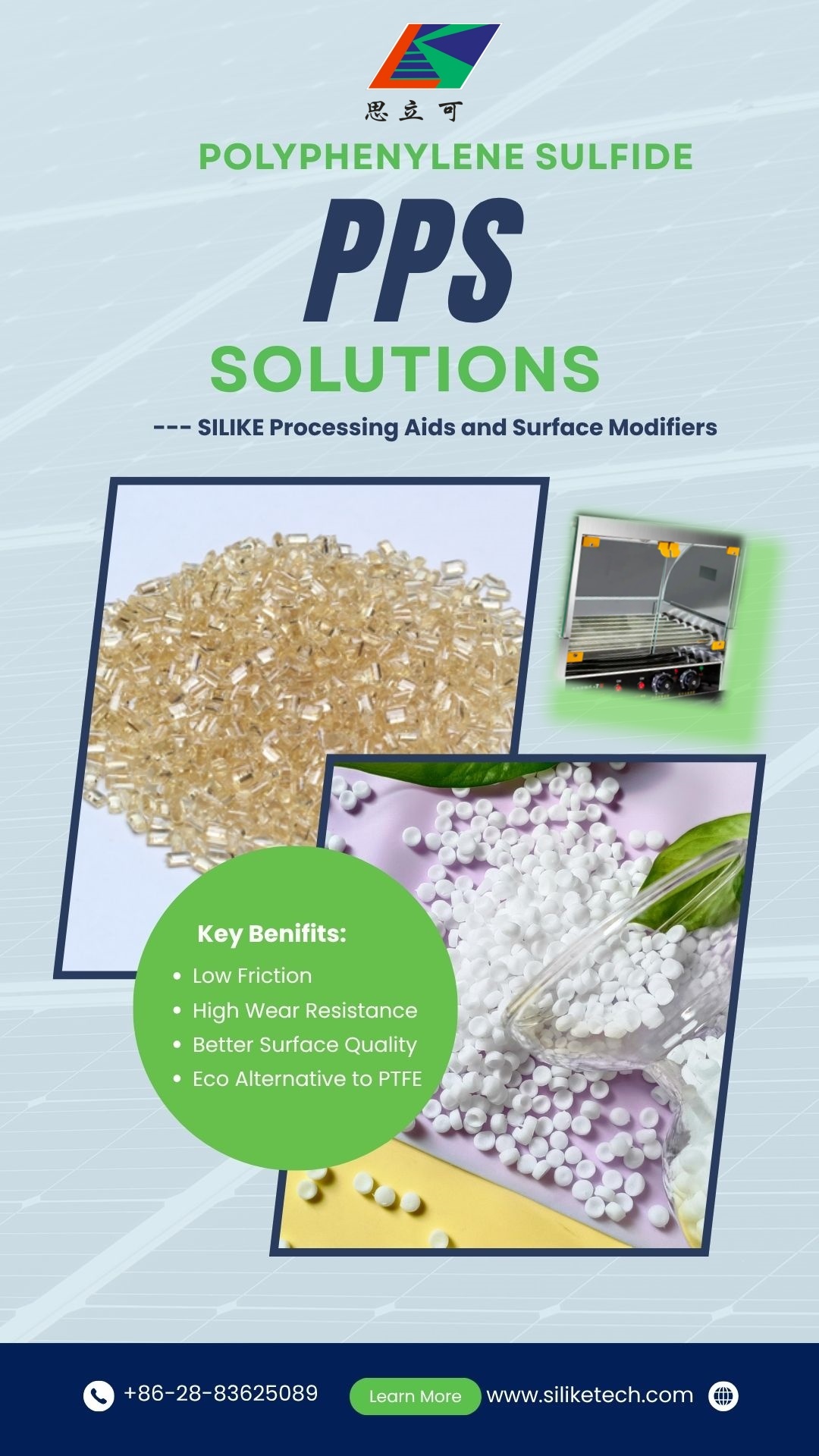What is Polyphenylene Sulfide (PPS)?
Polyphenylene Sulfide (PPS) is a semi-crystalline thermoplastic polymer with a pale yellow appearance. It has a melting point of approximately 290°C and a density of around 1.35 g/cm³. Its molecular backbone—composed of alternating benzene rings and sulfur atoms—gives it a rigid and highly stable structure.
PPS is known for its high hardness, excellent thermal stability, chemical resistance, and mechanical strength. Due to its outstanding performance, PPS is widely recognized as one of the six major engineering plastics, alongside polyethylene terephthalate (PET), nylon (PA), polycarbonate (PC), polyoxymethylene (POM), and polyphenylene ether (PPO).
Forms and Applications of PPS
Polyphenylene Sulfide (PPS) products are available in various forms and grades, such as resins, fibers, filaments, films, and coatings, making them highly versatile. The main application areas of PPS include the automotive industry, electrical and electronics, chemical industry, military and defense, textile sector, and environmental protection.
Common Challenges in PPS engineering plastics and How to Solve Them
Despite its excellent properties, PPS engineering plastics still faces several processing and performance challenges in practical applications. Here are three of the most common issues and their corresponding solutions:
1. Brittleness in Unfilled PPS
Challenge: Unfilled PPS is inherently brittle, limiting its use in applications requiring high impact resistance or flexibility (e.g., components subject to shock or vibration).
Causes:
Low elongation at break due to its rigid molecular structure.
Lack of additives to enhance toughness.
Solutions:
Use reinforced PPS grades with glass fiber (e.g., 40% glass-filled) or mineral fillers to improve impact strength and toughness.
Blend with elastomers or impact modifiers for specific applications.
2. Poor Adhesion for Coatings or Bonding
Challenge: PPS’s chemical inertness makes it difficult for adhesives, coatings, or paints to adhere, complicating assembly or surface finishing (e.g., in electronic housings or coated industrial parts).
Causes:
Low surface energy due to PPS’s non-polar chemical structure.
Resistance to chemical bonding or surface wetting.
Solutions:
Apply surface treatments like plasma etching, corona discharge, or chemical priming to increase surface energy.
Use specialized adhesives (e.g., epoxy or polyurethane-based) designed for PPS.
3 . Wear and Friction in Dynamic Applications
Challenge: Unfilled or standard PPS grades exhibit high wear rates or friction in moving parts like bearings, gears, or seals, leading to premature failure in dynamic applications.
Causes:
Relatively high coefficient of friction in unfilled PPS.
Limited lubricity under high loads or continuous motion.
Solutions:
Select lubricated PPS grades with additives like PTFE, graphite, or molybdenum disulfide to reduce friction and enhance wear resistance.
Use reinforced grades (e.g., carbon fiber-filled) for higher load-bearing capacity.
SILIKE Lubricant Processing Aids and Surface Modifiers for PPS Engineering Plastics
New Solutions for Enhancing the Wear Resistance of PPS Sliding Components

Introducing silicone-based additives SILIKE LYSI-530A and SILIMER 0110
LYSI-530A and SILIMER 0110 are innovative lubricant processing aids and surface modifiers for polyphenylene sulfide (PPS), recently launched by SILIKE. These silicone-based additives function similarly to polytetrafluoroethylene (PTFE), characterized by their low surface energy. As a result, they significantly reduce both the wear rate and the friction coefficient of PPS composites.
These additives exhibit an exceptionally low friction coefficient and function as internal lubricants. They generate a thin film on the surface of PPS when subjected to shear forces, thereby minimizing friction between PPS and mating surfaces, regardless of whether they are metallic or plastic.
By using just 3% LYSI-530A, the dynamic friction coefficient can be reduced to around 0.158, resulting in a smooth surface.
Additionally, an addition of 3% SILIMER 0110 can obtain a low friction coefficient of around 0.191 while providing equivalent abrasion resistance to that offered by 10% PTFE. This demonstrates the efficacy and potential of these additives in improving performance and durability across various applications, Ideal for sliding, rotating, or dynamically loaded PPS parts.
SILIKE offers high-performance silicone-based lubricants and processing aids for a wide range of plastic applications. Our additives are designed to improve processing efficiency and enhance surface properties in modified plastics and compounds.
Looking for the right additive for your formulation? Choose SILIKE — our silicone-based solutions may surprise you with their performance.Enhance PPS performance with silicone-based additives that reduce friction and wear — no PTFE needed..
Learn more about our products at: www.siliketech.com
Or contact us directly via email: amy.wang@silike.cn
Tel: +86-28-83625089 – We are happy to provide you with a tailored solution for your specific processing needs!
Media Contact
Company Name: Chengdu Silike Technology Co.,Ltd.
Email:Send Email
Country: China
Website: https://www.siliketech.com/
